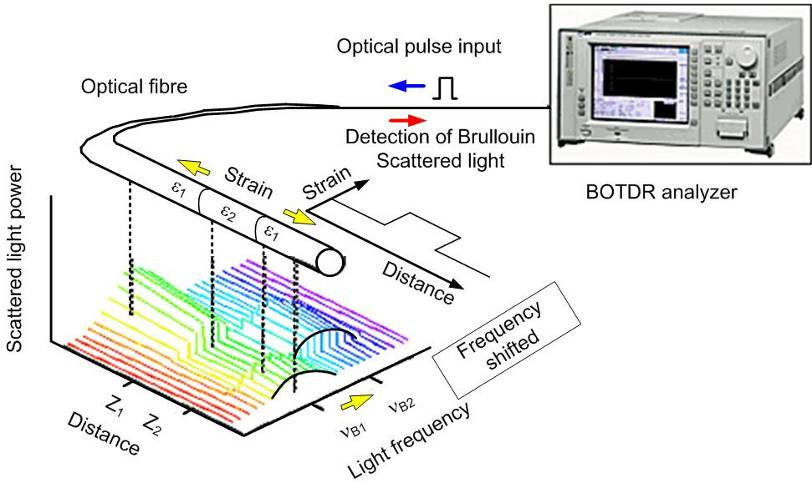Enhance Your Fiber Optic Projects With a Reliable Diameter Analyser
The combination of a reliable diameter analyser into fibre optic tasks functions as an essential component in attaining accuracy and uniformity. By promoting accurate size dimensions, these analysers not just boost the quality of installations yet also alleviate prospective compatibility issues amongst parts. In addition, the advanced capabilities of modern-day analysers simplify information collection and high quality control processes. As we check out the vital features and advantages of these devices, it comes to be obvious exactly how they can transform project end results and make certain adherence to market requirements. What remains to be reviewed is just how to successfully execute these analysers in your existing workflows.
Importance of Diameter Dimension
Gauging the size of fiber optic cables is a vital task that makes certain optimum efficiency and integrity in communication systems. Exact diameter measurement is crucial for different factors, primarily for maintaining signal integrity and lessening loss. A cord's size straight influences its capability to send light properly; variances from the specified size can cause raised attenuation, which affects the total efficiency of the network.
Moreover, specific dimension is essential throughout the installment and upkeep of fibre optic systems. An inappropriate fit between cable televisions and connectors can lead to signal destruction or total failure of communication links. By ensuring that diameters are within specified resistances, specialists can improve compatibility between elements, causing improved system reliability.
Additionally, size dimension plays a substantial role in quality control during production. Consistency in the diameter of fiber optic cables is vital for making sure consistent performance across different batches. optical fibre diameter analyser. This consistency assists suppliers keep market standards and promotes self-confidence amongst end-users
Attributes of an Effective Analyser
A reliable analyser for fiber optic tasks need to include numerous vital attributes that boost accuracy and functionality in size dimension. High-resolution optical sensing units are essential for accurate diameter analyses, making it possible for users to find even the tiniest variants in fiber density. These sensors should be enhanced by innovative calibration systems, making certain consistent efficiency throughout various conditions and materials.
Second of all, an easy to use user interface is essential for facilitating simplicity of procedure. This includes instinctive software that enables seamless information input and result, in addition to graphes of the measurements taken. A portable design enhances functionality in different area atmospheres, making it much easier to conduct analyses on-site.
Additionally, the analyser should support several dimension settings, fitting various fiber types and applications. The ability to store and get historical data is an additional crucial attribute, permitting users to track performance with time and make notified choices.
Benefits for Fibre Optic Projects
Executing a size analyser in fibre optic tasks uses significant benefits that substantially boost project efficiency and top quality. One of the main advantages is the capability to guarantee precise dimensions of fibre size, which is essential for maintaining optimal performance in fiber optic systems. Exact diameter readings assist in the recognition of variances that could lead to signify destruction or loss, thus guaranteeing top notch transmission.
In addition, using a diameter analyser improves the quality assurance procedure. By automating dimension jobs, task teams can lower the time invested in manual assessments, resulting in faster job completion and reduced work expenses. This effectiveness also permits more extensive screening protocols, leading to improved item reliability.
Additionally, uniformity in fiber size measurements advertises compatibility with various other fibre optic components, minimizing the danger of setup errors and improving general system efficiency. The consolidation of a size analyser not only help in maintaining sector requirements however likewise promotes self-confidence in job deliverables.
Combination Into Existing Operations
Integrating a diameter analyser right into existing operations can substantially improve the operational efficiency of fiber optic tasks. By flawlessly including this technology, teams can accomplish exact measurements that are important to preserving the stability and performance of fibre optic systems. This integration enables real-time information collection and analysis, which can be important during the manufacturing and setup phases.
Moreover, the ability to automate size measurement procedures reduces the potential for human error, guaranteeing regular quality assurance throughout the project lifecycle. The data created can be conveniently shared across systems, facilitating cooperation amongst engineers, service technicians, and project managers. This availability improves decision-making and accelerates project timelines.

Choosing the Right Size Analyser
When choosing a diameter analyser for fiber optic projects, it is crucial to think about a number of key factors check that straight effect measurement precision and operational efficiency. The resolution and precision of the analyser need to straighten with the specific requirements of your task. Higher resolution instruments can find minute variations in size, reference which is essential for making certain ideal efficiency in fibre optic systems.
For jobs with limited deadlines, a size analyser that uses quick data purchase can considerably improve performance. In addition, consider the analyser's compatibility with existing systems and software program.
One more essential aspect is the range of diameters the analyser can fit. By carefully reviewing these elements, you can select a diameter analyser that improves the performance and precision of your fiber optic jobs.
Verdict
In conclusion, the integration of an efficient diameter analyser is paramount for boosting fibre optic projects. Specific diameter measurements ensure optimum performance and reliability while decreasing installment errors (optical fibre diameter analyser).
A cord's size directly influences its capacity to transmit light official source effectively; inconsistencies from the specified diameter can lead to increased attenuation, which impacts the general efficiency of the network.
